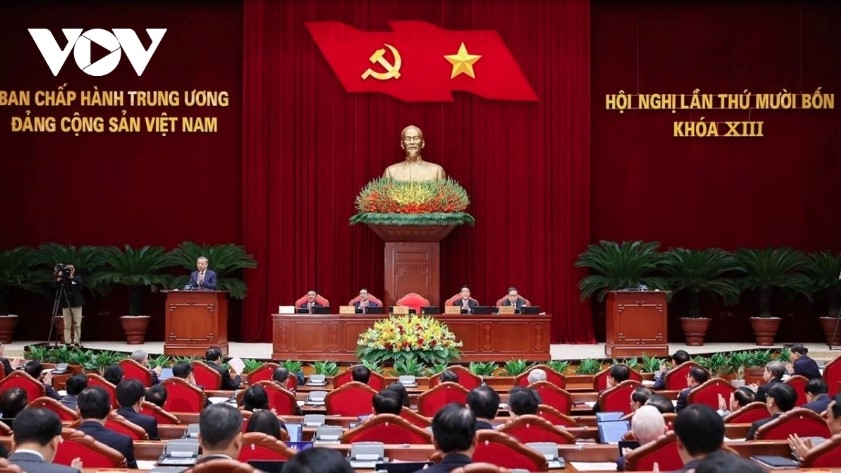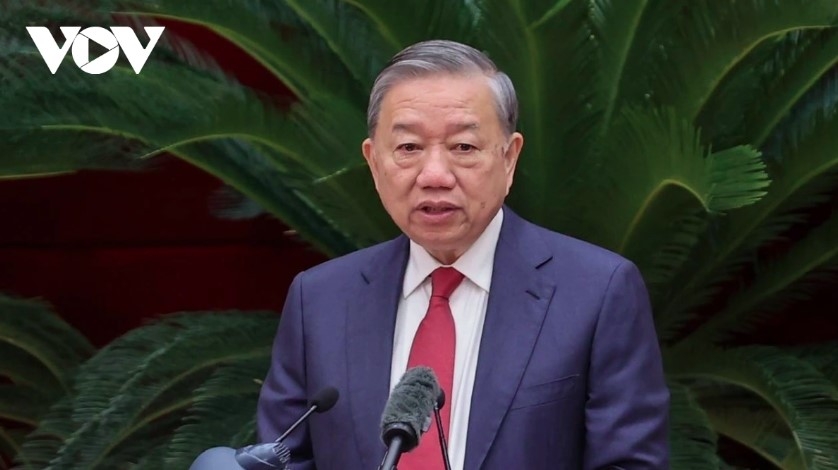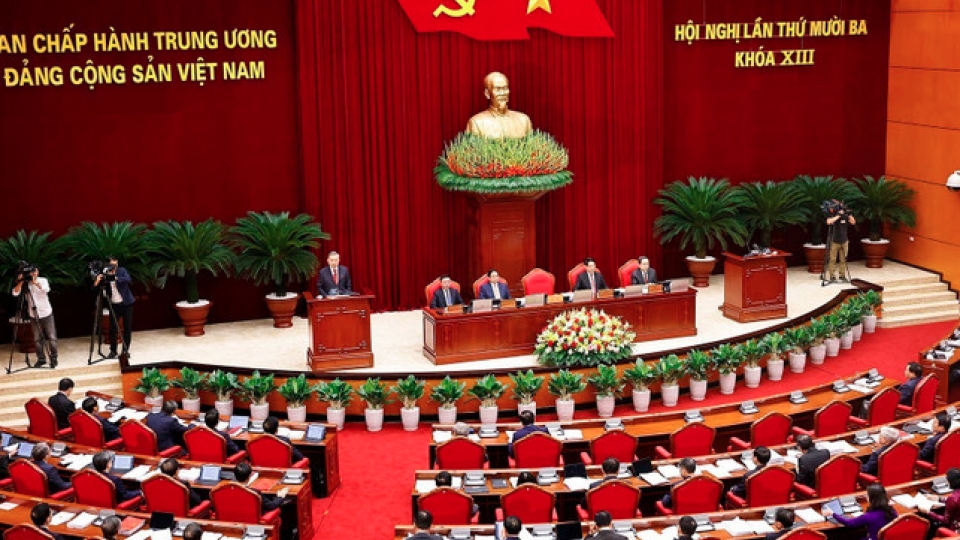Party Central Committee opens 14th session, to select top leadership for 14th tenure
VOV.VN - Party General Secretary To Lam chaired and delivered a key opening speech at the 14th session of the 13th Central Committee in Hanoi on October, which focuses on two major issues related to the 14th Party Congress, Party building and the political system.

In his opening remarks, General Secretary To Lam emphasized that the Central Committee will provide guidance on the number of Politburo members and Secretariat members for the 14th tenure and select candidates for nomination to the 14th Politburo and Secretariat.
He described this as a matter of utmost importance, “the core of the core,” since all decisions depend on the people in charge. Selecting personnel for the Party’s top leadership to carry out ambitious national development goals in the new period requires meticulous, thorough, cautious, and precise work.
The Party chief noted that beyond standard criteria applied to Central Committee members as set out in the 12th and 13th Central Committee sessions, the selection of candidates for the 14th Politburo and Secretariat must emphasize additional requirements suitable for the Party’s new revolutionary period. The Party Central Committee must therefore nominate the most deserving among the qualified.
According to General Secretary To Lam, candidates must demonstrate political firmness, exemplary conduct, and prioritize the nation and people’s interest above all. They must possess sharp strategic vision, organizational capacity to address bottlenecks, mobilize resources, and unify strength.
More importantly, they must have execution capability: setting clear, specific goals, assigning personal accountability, measuring outcomes with data, and implementing decisions thoroughly with high public service discipline.

“In the digital era, essential criteria include digital competence and data-driven thinking, deep understanding of the digital economy, green economy, circular economy, risk management, and the ability to coordinate across sectors, regions, and administrative levels. Leaders must be able to mobilize social resources, develop public-private partnerships, build market trust, integrate internationally, and use foreign languages and intercultural communication to expand development space,” the Party leader said.
Regarding a review report on the leadership and direction of the 13th Central Committee presented to the 14th Party Congress, he urged self-assessment and corrective measures. The Central Committee should contribute opinions to help the 14th tenure deal with shortcomings such as delays in policy implementation, lack of guiding documents, uneven execution, incomplete decentralization, ineffective vertical and horizontal linkages, and unclear accountability in some areas.
Organizational structures in some places are streamlined but not yet matched by improved efficiency. Bottlenecks in land management, capital markets, and skilled labor remain unresolved. Anti-corruption, anti-waste, and anti-abuse measures have yielded results, but early preventive work must be more decisive. Policy communication still falls short of being “accurate, sufficient, and timely,” he added.
On the review of Resolution 18 dated October 25, 2017, of the 12th Central Committee on continuing to reform and streamline the political system for efficiency, the General Secretary stressed the importance of a two-tier local government model. This allows provincial administrations to focus on strategy, planning, inter-regional coordination, and high-level public services, while communes stay close to residents to quickly deal with daily needs.
“Realigning administrative boundaries offers opportunities to restructure urban-rural networks, create growth poles and economic corridors, tap larger market scales, and reduce transaction costs for businesses and citizens,” he said.
Looking ahead, to maximize the effectiveness of the two-tier local government model, the three-tier system (central–province/city–commune/ward) must ensure connectivity and complementarity across institutions, resources, and data. Within this integrated structure, the central government plays a directing and coordinating role to ensure system-wide uniformity.
“When all three levels operate as a cohesive whole, the central government sets standards and coordinates across regions, provinces manage strategy, allocate resources, and monitor results, and local authorities serve directly, respond quickly, and provide real-time data. This ensures a stable, peaceful environment, rapid and sustainable growth, and improved welfare. Implementing lessons from Resolution 18 through a two-tier local government model with three-tier integration, with the Central Committee as the ‘institutional architect,’ will be a decisive lever for a streamlined, transparent, and effective political system, advancing the country firmly toward prosperity and citizen well-being,” General Secretary To Lam emphasized.
The session is expected to continue until the end of November 6.




